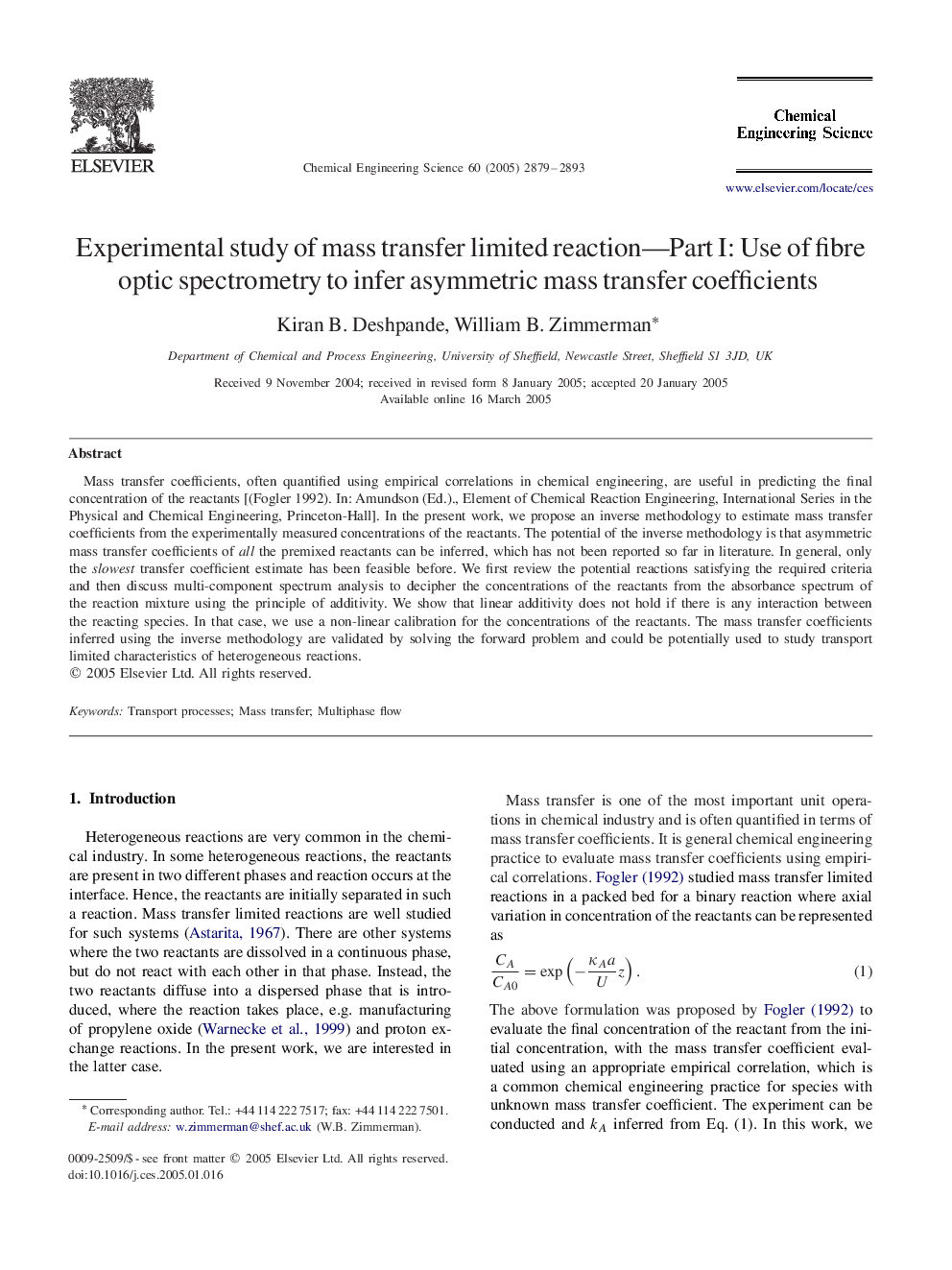| Article ID | Journal | Published Year | Pages | File Type |
|---|---|---|---|---|
| 10263417 | Chemical Engineering Science | 2005 | 15 Pages |
Abstract
Mass transfer coefficients, often quantified using empirical correlations in chemical engineering, are useful in predicting the final concentration of the reactants [(Fogler 1992). In: Amundson (Ed.)., Element of Chemical Reaction Engineering, International Series in the Physical and Chemical Engineering, Princeton-Hall]. In the present work, we propose an inverse methodology to estimate mass transfer coefficients from the experimentally measured concentrations of the reactants. The potential of the inverse methodology is that asymmetric mass transfer coefficients of all the premixed reactants can be inferred, which has not been reported so far in literature. In general, only the slowest transfer coefficient estimate has been feasible before. We first review the potential reactions satisfying the required criteria and then discuss multi-component spectrum analysis to decipher the concentrations of the reactants from the absorbance spectrum of the reaction mixture using the principle of additivity. We show that linear additivity does not hold if there is any interaction between the reacting species. In that case, we use a non-linear calibration for the concentrations of the reactants. The mass transfer coefficients inferred using the inverse methodology are validated by solving the forward problem and could be potentially used to study transport limited characteristics of heterogeneous reactions.
Related Topics
Physical Sciences and Engineering
Chemical Engineering
Chemical Engineering (General)
Authors
Kiran B. Deshpande, William B. Zimmerman,
